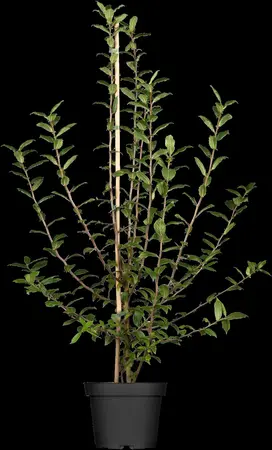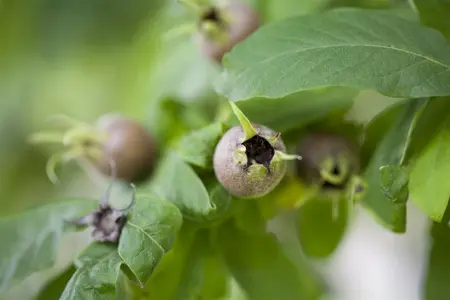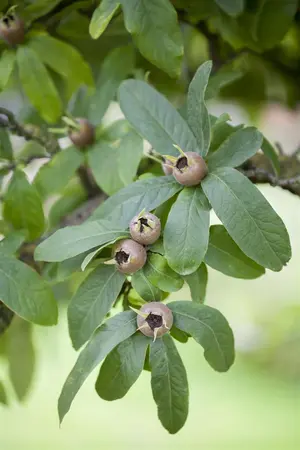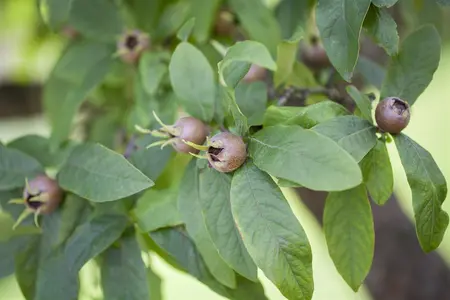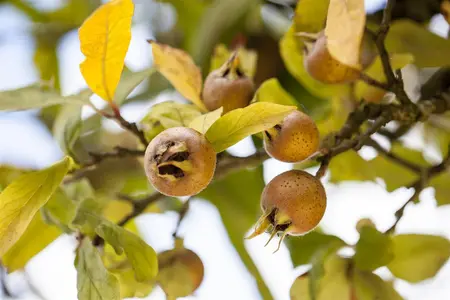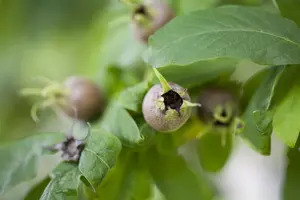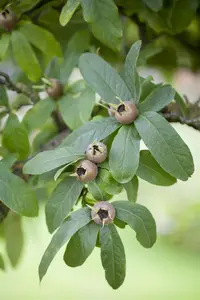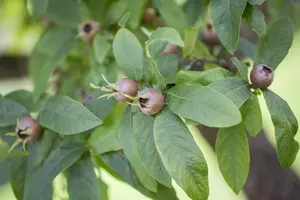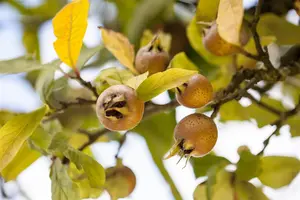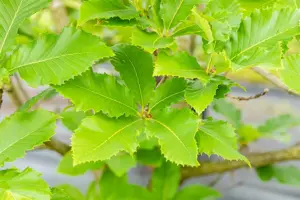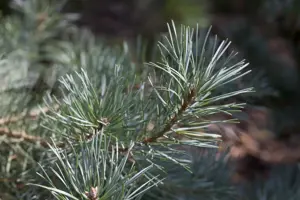Mespilus germanica - 60-80 CM C2.5
Mespilus germanica - 60-80 CM C2.5
Description
The Medlar (Mespilus germanica) is a spreading, broad small tree that produces white, cup-shaped flowers. They appear from May to June. These produce brown, flat fruits from November. The Medlar also has lanceolate, dark green leaves. Its bark is grey. In a sunny to semi-shady location with calcareous, nutrient-rich, loamy soil, it usually reaches a height of approx. 5 metres and grows to a width of approx. 5 metres.
Bulletpoints
* suitable for flowering hedges
* the flowers are highly favoured by bees, bumblebees and hoverflies
* attractive orange autumn colouring
* easy to care for
* heat-tolerant, resistant to urban climates, thermophilic, cannot be built over
leaves
The deciduous leaves of the Medlar are dark green, lanceolate, alternate. They are about 7 - 12 cm tall. Medlar turns bright orange in autumn.
Bark
Grey bark makes this plant an eye-catcher in any garden.
Spread
Southern Europe to Caucasus.
Frost hardiness
The Medlar has good frost hardiness.
Growth
Spreading, broad.
Water
The plant has a medium water requirement.
Location
Preferred location in a sunny to semi-shady position.
Soil
Normal soil.
Planting time
Container plants can be planted all year round, except when the soil is frozen and in summer heat (over 30°C).
Care
- Fruit trees planted in spring must be watered generously throughout the summer. Well-rooted plants only need additional water in extremely dry conditions.
- Cut back boldly in spring so that the plant grows compactly.
Flower
The white, cupped flowers appear from May to June. These grow to around 3 - 4 cm in size.
Fruit
Mespilus germanica forms brown fruits with a sweet, nutty flavour. The skin of these flat fruits is rough. Ripening time from November.
Use
Solitary, ornamental shrub, bee pasture, hedge, bird food plant, jam, liqueur
Root
Mespilus germanica is a deep-rooting plant.
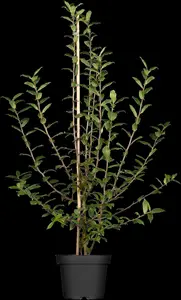
- Article number500
-
EAN codeMEGERMAN-2060080C25
- Latin nameMespilus germanica
- catalogLandscape shop

